Nutmeg: More Than Just A Holiday Spice
Sure, nutmeg adds a warm flavor to eggnog and other treats, but this spice has been revered for its healing powers since ancient times.
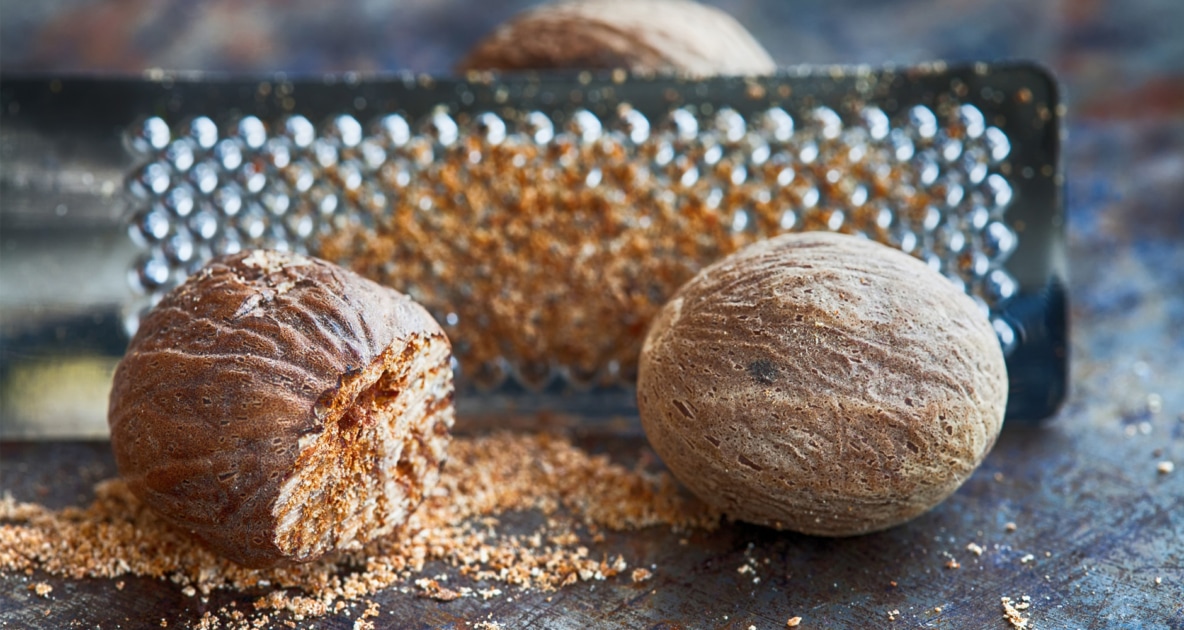
Of all the seed spices in our spice rack, nutmeg (Myristica fragrans) has a distinctive flavor and aroma we closely associate with fall and the holidays. In fact, nutmeg is a big part of what makes “pumpkin spice” so delicious. It is usually purchased ground in a jar, so you’ve probably never given its origins a second thought. But what exactly is it, and where does it come from?
Where Does Nutmeg Come From?

In spite of its name, nutmeg isn’t a nut. It’s actually the dried seed of an evergreen that’s native to Molucca Islands, Indonesia, known as the “Spice Islands.”
Through the centuries, the Spice Islands experienced great turmoil as the Portuguese, Spanish, English, and Dutch all sought control of the islands to gain a monopoly on this valuable spice trade. Why? Partly because nutmeg was believed to be a miracle cure for the plague. This caused prices to soar, creating the “Spice Wars” which lasted two hundred years.
Today, nutmeg is grown commercially in the Spice Islands, the Caribbean, and Grenada, and is cultivated for two culinary seasonings: nutmeg, and mace—the waxy, red aril, or coating, on the outside of the seed, which is dried and ground and also a popular spice, used in apple pie.
It takes 7 to 9 years after planting for the tree to produce its first crop of spices. And no guessing when the spices need picking! The fruit—referred to as the nutmeg apple—splits in half when it is ripe, revealing the prized spices inside.
Interestingly, the fruit itself has no commercial value and is most often discarded, but is sometimes used to make jams, chutneys, and candies.
Who Would Have Thought Nutmeg Starts As An Apple?
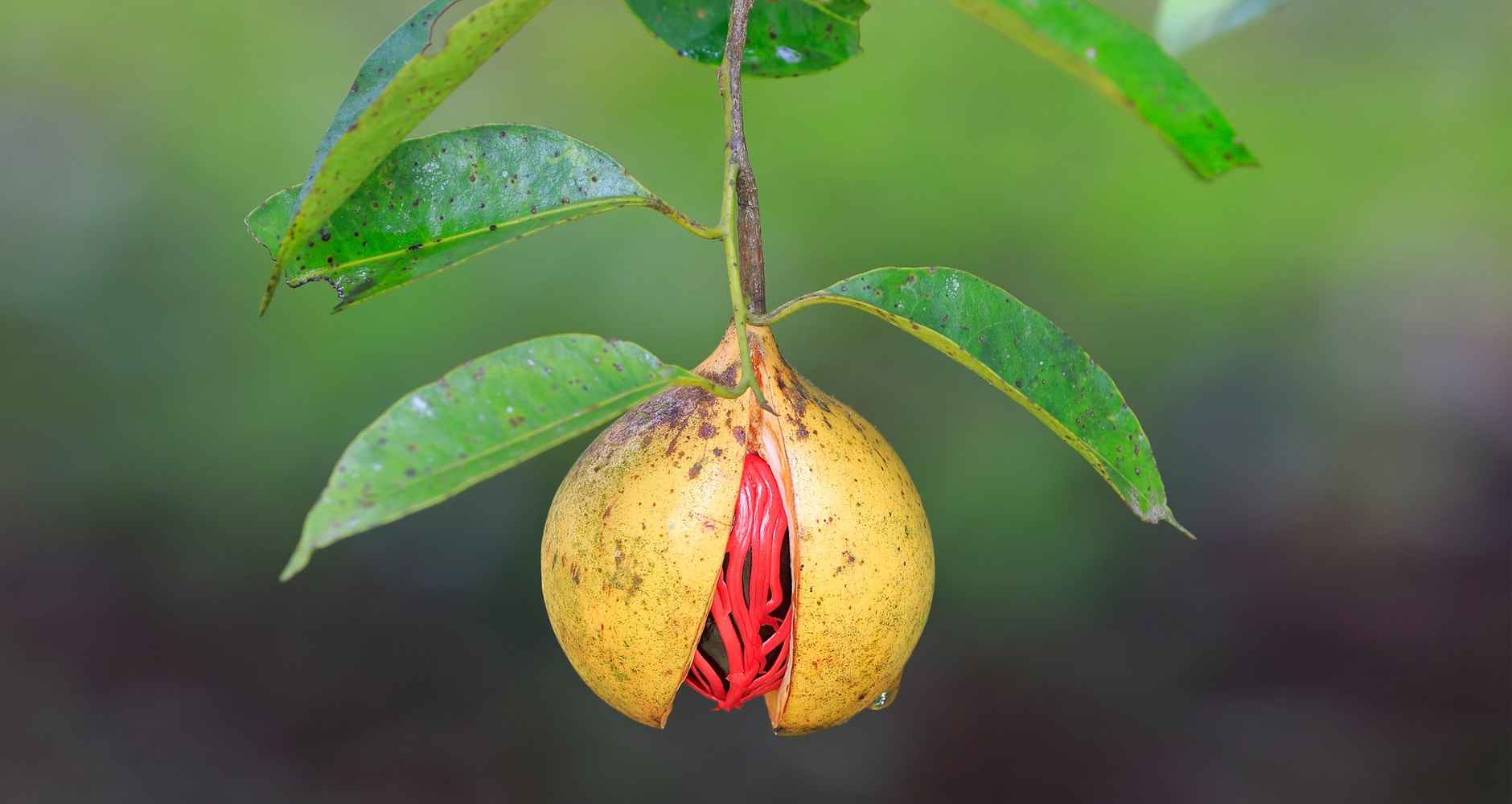
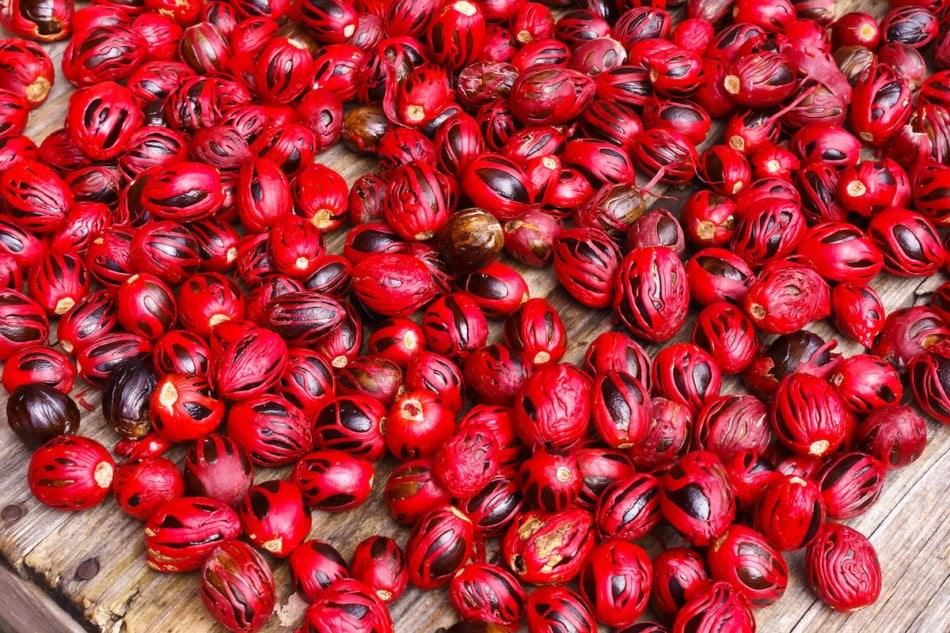
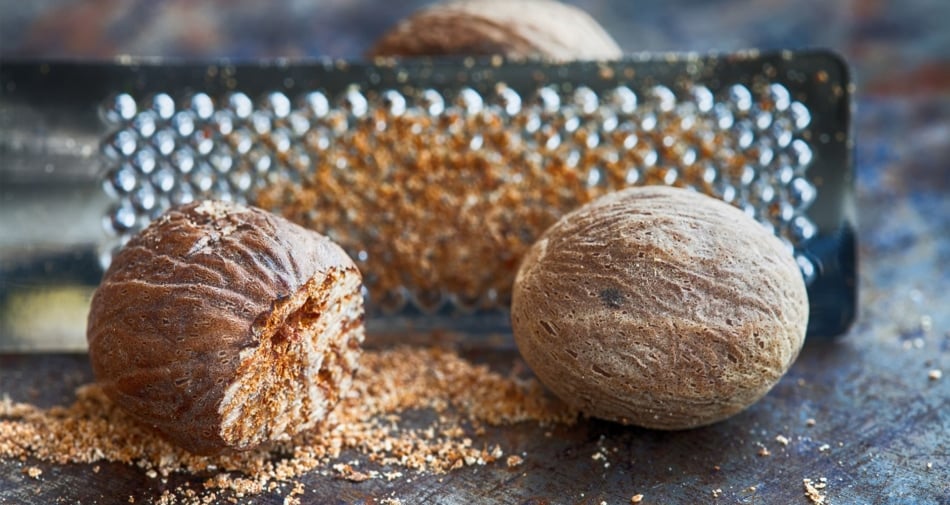
Culinary Uses for Nutmeg

Nutmeg’s distinctive flavor is described as sweet, warm, and highly spicy. It can be purchased whole or ground. One whole “nut,” grated, equals 2 to 3 teaspoons of ground spice.
Whether you’re seasoning foods or using nutmeg in home remedies, a little of this spice goes a long way.
- Ground or grated, it is most commonly used with eggnog, but try it in hot chocolate, spiced tea, or mulled wine.
- It enhances the flavor of meats like pork, beef, and poultry. It is used commercially to season sausage, frankfurters, and lunch meats.
- Many chefs add a dash to quiches and cheesy pasta dishes like Fettucini Alfredo.
- It’s the signature seasoning in yummy Swedish meatballs.
- Stir a ¼ teaspoon in 2 cups of batter for pancakes, waffles, muffins, or coffee cakes for added flavor.
Home Remedies and Health Benefits of Nutmeg
- Bad Breath Cure– Nutmeg has antibacterial properties and kills the bacteria causing halitosis, or bad breath. It is used in toothpaste and mouthwashes to promote healthy gums and teeth. Mix a teaspoon in a glass of water, swish, and spit. Or rub a pinch over teeth and then rinse.
- Facial Care – Used topically, it reduces inflammation, acne scarring, and heals skin irritations. It is typically mixed with honey or water and made into a paste, then applied to the face, avoiding eye contact, for its healing properties and rejuvenating effects on the skin.
- Arthritis Pain Reliever —It contains pain-relieving properties similar to menthol, that can be used to reduce inflammation and pain associated with arthritis and strains. Use it in your foods or beverages to reap the benefits. Topical analgesic pain relief products containing nutmeg oil are available over the counter.
- Sleep Inducer – Have trouble falling asleep? This spice is a good source of magnesium which reduces nerve tension. It also triggers the release of serotonin, helping your body to relax and fall asleep. Try drinking a cup of warm milk (or milk alternative) or hot tea with a pinch of nutmeg and a little honey.
Studies have shown it has many other health benefits, including reducing blood pressure, aiding digestion, bolstering bone strength, enhancing brain function, and even reducing the spread of cancerous cells in Leukemia patients.
Can Nutmeg Be Poisonous?
Nutmeg must be used sparingly. When taken in large amounts, it is known to be toxic to the body, causing seizures or hallucinations. See the warnings here. It may also interact with some medications. To avoid possible side effects, talk to your healthcare provider before using these spices for medicinal purposes.
Make Your Own Pumpkin Pie Spice
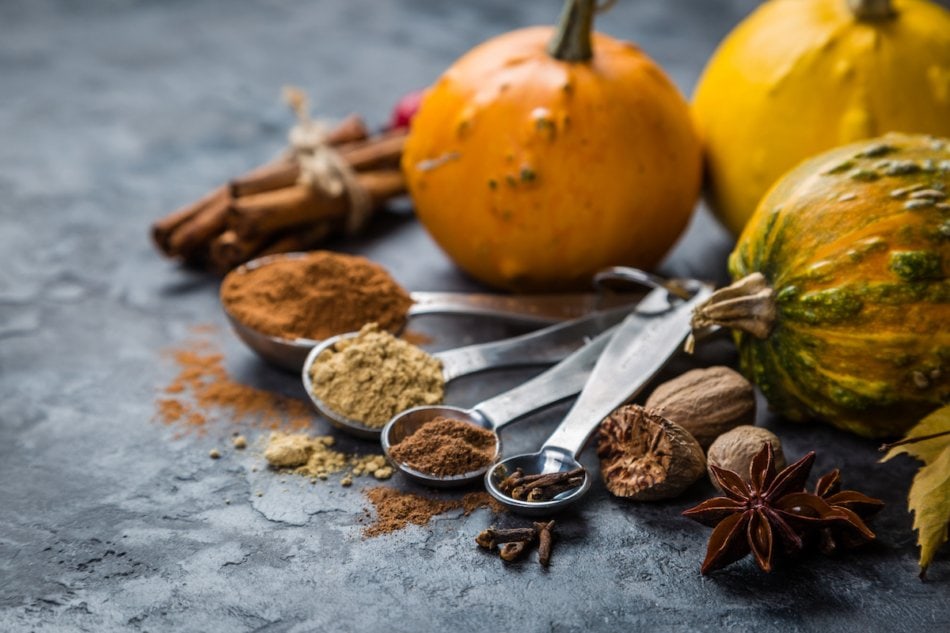
Combine:
3 tablespoons ground cinnamon
2 teaspoons ground ginger
2 teaspoons ground nutmeg
1½ teaspoons ground allspice
1½ teaspoons ground cloves
Store in an air-tight jar or plastic bag.

Deborah Tukua
Deborah Tukua is a natural living, healthy lifestyle writer and author of 7 non-fiction books, including Pearls of Garden Wisdom: Time-Saving Tips and Techniques from a Country Home, Pearls of Country Wisdom: Hints from a Small Town on Keeping Garden and Home, and Naturally Sweet Blender Treats. Tukua has been a writer for the Farmers' Almanac since 2004.





